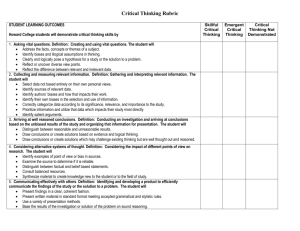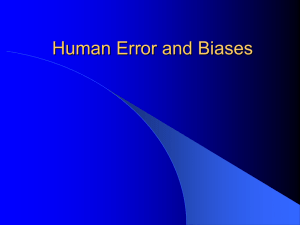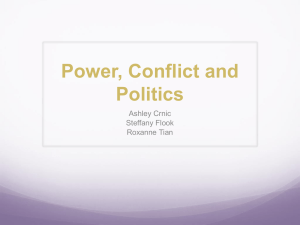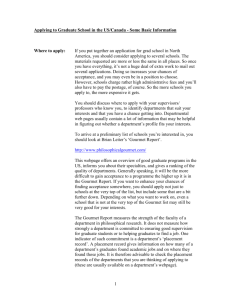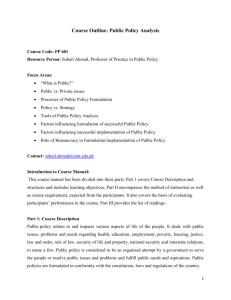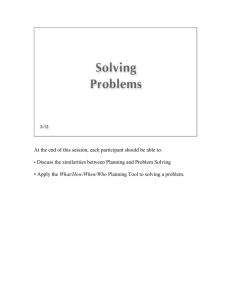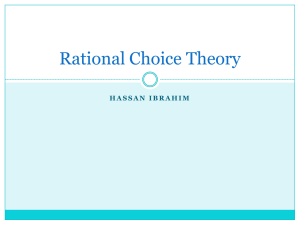Introduction to Theories of Public Policy decision making
advertisement
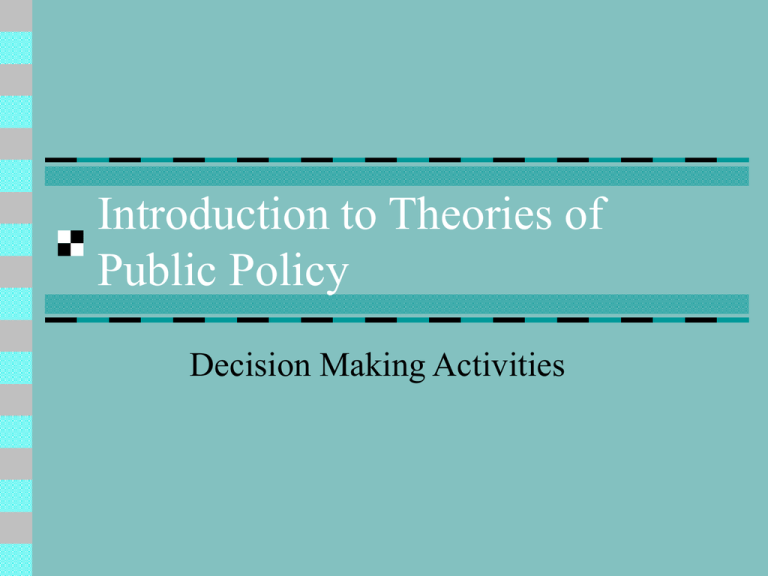
Introduction to Theories of Public Policy Decision Making Activities Outline The Policy Process Model Six Decision Making Models Decision Making in the Real World The Policy Process Process Activity Participants Problem Identification Activity Publicizing societal problems Expressing demands for government action Participants Mass media Interest groups Citizen initiatives Public Opinion Agenda Setting Activity Deciding what issues will be decided Deciding what problems will be addressed by government Participants Mass media Elites Parties Candidates for elective office Policy Formulation Activity Developing policy proposals to resolve issues and ameliorate problems Participants White House staff Congressional committees Interest groups Think tanks Policy Legitimation Activity Selecting a proposal Developing political support for it Enacting it into law Deciding on its constitutionality Participants President Congress Courts Policy Implementation Activity Organizing departments and agencies Providing payments or services Levying taxes Participants President and White House staff Executive departments and agencies Policy Evaluation Activity Reporting outputs of government programs Evaluating impacts of policies on target and nontarget groups Proposing changes and reforms Participants Executive departments and agencies Congressional oversight committees Mass media Think tanks Decision Making Models Cost-Benefit Analysis Multiobjectives Models Decision Analysis Systems Analysis Operations Research Nominal Group Techniques Cost Benefit Analysis In an era of scarcity, interest in weighing cost against benefits rises Measurement of costs and benefits The distributional impacts The discount factor, and The decision rules Multiobjectives Models Recognition that there are multiple objectives in the policy and administrative processes Need to calculate the relative importance or weight of various objectives Decision Analysis Recognition that a decision is not viewed as isolated because today’s decision depends on the ones we shall make tomorrow Systems Analysis This approach forces us to look at problems as systems; assemblies of interdependent components; 4 basic steps: Problem formulation Modeling Analysis and optimization Implementation Operations Research Here the scope of decision making is narrower: Concerned with problems that can be represented by mathematical models to be optimized Concerned with relatively small problems Nominal Group Techniques Advantages— bring together broader perspectives for defining the problem, more knowledge and information, easier to implement (buy-in) Disadvantages— time consuming, expensive, lead to compromise solutions or reduction of valuable dissenting opinions (groupthink), no clear focus for responsibility if things go wrong Nominal Group Techniques When to use a group— problem is uncertain, complex, or has the potential for conflict; requires interagency or intergroup cooperation; problem and its solution have important personal and organizational consequences; significant, but not immediate deadline pressures, widespread acceptance and commitment are critical to successful implementation Decision Making in the Real World Decision Making in Times of Crisis Biases in Decision Making Decision Making in Times of Crisis Demonstrated that decision making is a very human affair involving far more than objective analysis Important decisions often made by groups, not individuals Not an entirely rational process Some participants more rational than others Real limitations to applying a rigorous approach to every facet of a problem Biases in Decision Making Bounded rationality—people have limits or boundaries on how rational they can be Satisficing—decision makers choose the first solution alternative that satisfies minimal decision criteria Biases in Decision Making Seeing only one dimension of uncertainty, Giving too much weight to readily available or recent information Being overconfident Ignoring the laws of randomness Being reluctant to audit and improve decision making
